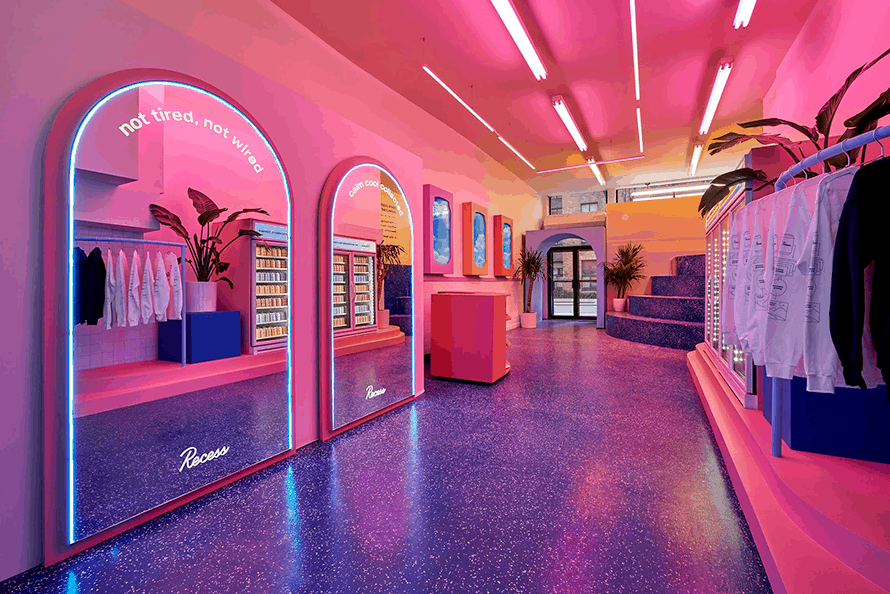In Commerce, Content is King (or Queen)

How online shopping is becoming valued more for the shopping experience.
In 2017, the New York Times published a piece titled An Ode to Shopping Malls, outlining the story of one man, Dan Bell, who spends his time documenting walking tours through what he calls “dead malls”, the sprawling, 800,000+ sq. feet consumer playgrounds that once were the place to be seen, to socialize, and to shop.
Watching Dan walk through the old hallways and remark on the old cornerstone shops — Sears, Dillards, Macy’s — evokes a certain type of nostalgia that all 20-, 30-, and 40-somethings will find familiar.
Shopping at malls was an experience where our senses were triggered — the wind of starchy air conditioning, the beep of a cash register, the smell of a soft pretzel. This so-called Sensory Marketing was the subject of constant research well through the early 2000s and 2010s, and it remains a popular tactic for brick-and-mortar businesses. Nestled in that experience is the true, compelling reason behind why people shop.
Yes, shoppers want to purchase an item, but they also want to be entertained along the way.
So what’s the digital equivalent of a smell, a sound, or a sense? In this digital age, capturing a shopper’s attention is more difficult than ever, so brands are leaning in on innovative content to help carry the weight.
Ecommerce: Picking up where malls left off
It’s erroneous to compare an ecommerce storefront to a brick-and-mortar store. While they’re both an area where an item can be purchased, one is certainly more influenced by the digital age.
There are no retargeting ads for mall shops. Rather, the marketing of the store was built into the lighting, the graphics, the music, and even the smell of the store.
Digital stores are now paying homage to that in-person experience by doubling down on online shopping journeys that mimic that of the 80s and 90s.
The journey to conversion isn’t just in the checkout
It’s common knowledge that a lot of influencing factors go into the process of shopping for something online.
Outside of the normal considerations like price, shipping speed, and product specs, on-site components like search capabilities and site performance weigh heavily on the shopper’s experience, and thus their likeliness to convert.
Source: Statista
Aside from those considerations, the decision to buy also depends on the relationship that your brand has with the customer.
You’ve heard about the Rule of 7: a prospect needs to “hear” your advertising message at least 7 times before they’ll take action to buy that product or service.
In a perfect world, full of perfect conversions, the optimal way to maximize your sales is to create an experience that combines the tactical considerations with the tailored relationship building.
An example of offline innovation
All of the brands that you’ve heard buzz about in the past two years — Amazon, Glossier, Rent the Runway, Casper, Apple — all have one thing in common: they build their products off of the experience that they provide to shoppers, and the success of the products themselves come naturally.
Take Recess for example.
Capitalizing on the monumental success of the CBD industry, paired with a unique, eye-catching brand, in early 2019 Recess hit the streets of NYC to create a temporary pop-up experience. A relaxing space with in-person events and programming, the Recess pop-up made headlines when it first was announced, primarily because it was apparent that the space was meant to create a community, rather than just sell a product.

Source: Adweek
As users spend more and more time on their phones immersed in digital technology, it’ll become increasingly important to fuse different channels together (like Recess did with this pop-up) to capture the attention of shoppers that are primarily accustomed to shopping online and on a device.
An example of online innovation
Sometimes a brand needs help propelling themselves into the online era — as opposed to vice-versa.
In their work with New York University, Blue Fountain Media took the archaic stereotypes of educational content and transformed their online footprint into something that was innovative, tailored to the consumers (students), and in-line with mobile trends.

Aside from strengthening the NYU brand, this new website provides users with a more engaging entry-point into their transactions or exploration of NYU.
Conclusion
The familiarity and interconnectivity that we once saw in the retail experience at shopping malls are now being replicated in online shopping experiences, but the switch to digital is not an easy one.
Having the right tools and techniques in your online user-facing experience is no longer enough to keep customers engaged and happy with your brand.
With increasing competition and rising consumer familiarity with innovation, it will take more to be noticed and stay noticed.
Cutting-edge brands have paved the way to conversions by digital experiences with pop-up stores, on-site optimizations, and true relationship building with their customers.
Content-first platforms like BigCommerce have the ability to plug into a variety of content management systems, like Drupal and WordPress, to leverage the existing content while adding ecommerce functionality. It’s all part of our headless commerce approach.

About BigCommerce
BigCommerce is the world’s leading cloud-based ecommerce platform for fast-growing and established brands. Combining enterprise functionality, an open architecture, and rich app ecosystem, BigCommerce enables businesses to grow online sales with 80% less cost, time and complexity than on-premise software.
About the Author: Corinne Watson
Corinne is a writer and researcher at BigCommerce, where she works directly with agency and technology partners to bring their tools, services, and ideas to the commerce industry at large with educational content. When she’s not working, she’s creating and designing for fun online.
